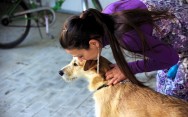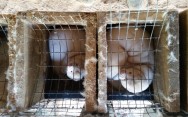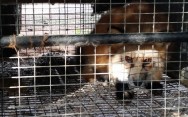Spain’s new animal rights law has notable exceptions that teach us a lot about how people view animals.
Spain has made it illegal to leave pets alone. Wild animals have been banned from the circus and marine parks are not allowed to keep any new dolphins in captivity that haven’t already lived in the marine park for most of their lives. Pets can no longer be bought from pet-shops or online. Only licensed breeders can sell pets. Mandatory pet insurance and registration is also required.
One of the quirks of the law is that it leaves out certain animals that feature in cultural activities in Spain. Hunting dogs are excluded from the legislation after the hunting lobby fought for the exception. Bullfights are also left out of the legislation, despite being one of the cruelest sports involving animals.
Bullfighting involves stabbing a bull with lances to weaken the animal, then eventually killing the bull. The bull is led into the ring, greeted by a matador, then jabbed by picadors and usually killed by the matador. The “sport” consists of introducing an animal to an extremely stressful situation– a ring with a large cheering audience — baiting and disorienting the animal, wounding it, then killing it. It is an activity that animal rights activists have long fought against. It is losing favor with the public even in places like Spain where bullfighting is traditional. Leaving it out of a sweeping animal rights law is arbitrary and caters to humans, leaving animals to suffer.
The fact that these exceptions are left standing says a lot about how humans prioritize the beings who are worthy of dignity and protection. Working animals, lab animals or animals like invertebrates are often left out of animal rights laws. Animal protection is still a cultural exercise enacted by humans who feel a closer relationship with some animals than others due to tradition, culture and the extent to which humans recognize traits of themselves in the animal. Many of the provisions in Spain’s animal rights law have been welcomed by activists, but the law does not yet achieve the goal of animal rights, which is to treat animals as if they have equal rights to humans, and each other.
|
Tags: Animal Abuse,
Animal Cruelty,
Animal Equality,
Animal Neglect,
animal rights,
Animal Rights Law,
Bullfighting,
Hunting,
Kevin Boileau,
Pets,
Transhumanism,
Working Animals
Children roaming through the woods with air rifles may sound like dystopian science fiction, but it almost became a reality in New Zealand. Local children were encouraged to compete to shoot feral cats as part of an effort to reduce the population of animals that threaten the ecosystem, and raise money for the local area. Children were encouraged to shoot as many cats as possible for a cash prize of $155.
During the previous year’s event, more than 250 children killed 427 animals, mostly possums, hares and rabbits. Although the cat hunting competition was called off this year, the events in other categories will still go ahead.
The event was canceled partly due to public outrage over the massacre, but also due to dangers to children themselves, and the potential danger to domestic cats. In addition to the cruel murder of feral cats, opponents of the competition pointed out what should be obvious, which is that there is no way to tell for sure whether a target is a feral cat or someone’s beloved pet.
Feral cats are considered an invasive species that threaten native wildlife in New Zealand. Animal rights advocates have stressed that solutions like the cat hunting competition are not a sustainable or effective way of dealing with this issue. Critics argued that it was more about glorifying violence and teaching children to view animals as disposable objects rather than finding a long-term solution to the problem.
One such alternative solution is Trap-Neuter-Return (TNR), a method that has been successfully implemented in many parts of the world. TNR involves trapping feral cats, sterilizing them, and returning them to their colony. This helps to control the population of feral cats without resorting to lethal methods. It also reduces the risk of disease transmission and other negative impacts of uncontrolled feral cat populations. Another alternative is to educate the public on responsible pet ownership and the importance of spaying and neutering cats. This can help to prevent feral cat populations from growing and reduce the number of cats that end up on the streets.
Shooting cats in an inhumane manner with air rifles, may also have caused them to die a more painful death. The obvious violence and suffering felt by animals was intertwined with the grave risk to children both psychologically and physically. Children were not only exposed to dangerous and violent behavior, they were also at risk of injuring themselves or others.
The competition represents a bloodthirsty and unnecessary culture of ‘Man vs Nature’ where children are encouraged from a young age to see themselves as violently dominating the environment and the creatures within it. The controversy may have prevented children from hunting cats, but it has not shut down the competition entirely. Children will hunt animals in a wanton way that will cause great psychological harm to the children and cruelty and suffering to animals.
Humans learn to designate animals like cats or other companion animals higher on a food chain, with humans at the top. We teach our children that humans are separate from animals and nature, and that only some of us have a right to live in freedom from suffering and slavery. Animal rights advocates should celebrate that this cruel event has been canceled, but be careful not to ignore that non-domestic animals remain the victims of cruel hunting and culling, and that children are being taught lessons of cruelty, not compassion.
|
Tags: Animal Cruelty,
Children and Animals,
Education,
Feral Cats,
Hunting,
Kevin Boileau,
Nazarita Goldhammer,
Non-violence,
Psychological Damage,
Transhumanism,
Trap Neuter and Release








Social Media